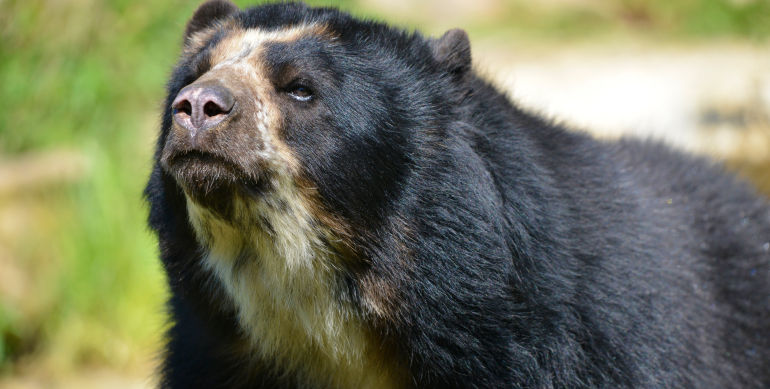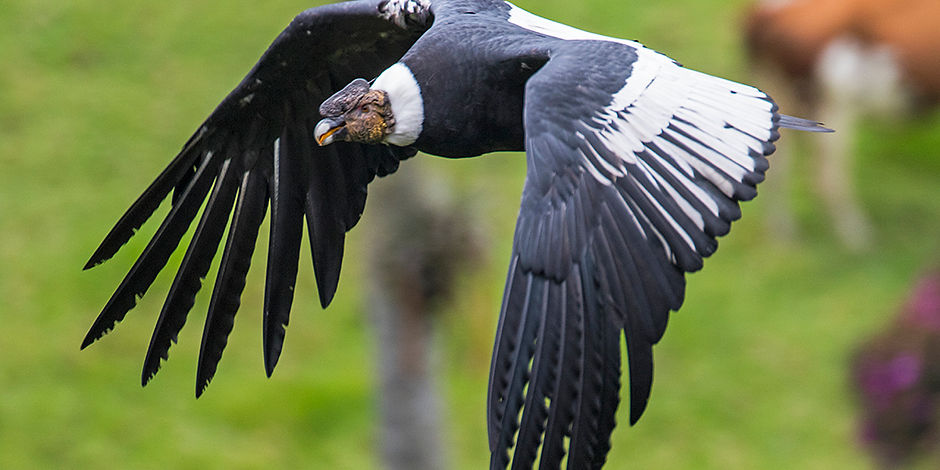Cocora Valley, Los Nevados National Natural Park
In the region of the mountain range of the Colombian Andes, there is located the Los Nevados National Natural Park, a natural area in which the páramo ecosystem or also called the alpine tundra is predominant, as well as the Andean forests. In this park, the Cocora Valley can be found, in the Quindío Department, close to the Salento municipality, in Colombia. This specific place is mostly known for protecting and having the National tree of the country, which is the Quindío Wax Palm.
Climate
In Cocora, there is a temperate oceanic climate, in which the summers are very cool, while during the whole year there are large amounts of rainfall. For this reason, most of the vegetation includes forests and plants in cold weather. Finally, the average temperature is equal to 14° C, and there are no dry seasons in any of the months.

Flora and ecosystems
The paramo, which is the main tundra ecosystem present in the park and Valley. There is not a lot of vegetation, like moss, ferns, selaginellas, spikemoss, and the frailejones. These plants absorb and stock the water from the humidity to survive. The Andean forests are characterized by being humid, with cold and rainy weather, in which there can be found the drago, arrayanes, and the Andean princess flower.

Quindío wax palm / La Palma de Cera
This palm is the highest in the world and can reach up to 60 meters. Indeed, one of the tallest species in Cocora, were reported to have between 35 to 48 m. They are called the wax palms since the trunk and the dark rings around it, are covered fully with wax. There are two zones in which these plants have been located, first, in the lower zone, up to 2100 m, and in the higher one, from 2000 to even 2900 m. In this precise area, the oldest and highest species live, which can have between 98 to 169 years.

More about the palm
Threats of the palm in the past: During the Holy Week, the young leaves of the plant were taken and cut off so that people could continue with their religious traditions. However, the protection of the species increased after the official protection of the wax palm in the year 1985. In this way, the religious practice recently stopped, nevertheless, there are other issues that can put these palms in danger.
In the present, half of the population of the species are very old and are in the final stage of their lives. The average estimation of the time they have left is of 47 years. For this reason, one of the crucial problems is the reproduction of the new generation of palms, which means that it is very important to protect the areas of habitat for the future of the species.
Fauna
Andean Tapir / Danta de Montaña
The mountain tapir or Andean tapir is considered to be the smallest species of the other 4 that exist in the world. Their average length is 1,8 m, and the female individuals are bigger than the males. They have a very dense fur, of dark and black tone, while they have white color around the lips. Also, they have 4 fingers in the forelimbs and 3 fingers in the hind limbs. They are usually lonely animals, although they spend time in pairs during the reproduction period when they reach maturity at 14 to 24 months.
The tapirs are usually more active at the beginning of the day when the temperature is colder. Their diet includes fruits, plants, and diverse vegetation species. For this reason, they are essential for the spread of different kinds of seeds, which helps for the conservancy of the ecosystems. Some of the natural threats of the tapir are the puma or the Andean bear.

Spectacled bear
This Andean bear is known for preferring to live in the cold and humid forest of the region of the Andean Mountain, in which its favorite food is found since its diet is mostly vegetarian. In this way, most of the alimentation that this bear consumes is the buds of orchids and bromeliads, fruits and palms from the trees, and rarely hunts mammals of different sizes. This animal is considered to be the greatest mammal on the continent, by being able to reach between 1.75 to 2 m in length. It has dark brown and reddish fur and a characterized cream or yellow color in its face and neck, that surrounds its eyes, making it look similar to a pair of glasses.
As a way of refuge, these bears build beds of leaves and plants, for example of the Bromelia plants, and they can be made on the floor, or even in the trees, that can reach up to 15 meters in total. This shows that they are excellent climbers, who can reach with more facility foods. These beds are not only refugees but also a place in which the youngest species are taken care of, as well as it has the purpose of resting, and of food source. Moreover, the Andean bears are very important for this ecosystem, as they transport different types of seeds in their digestions system since at the moment defecating, these seeds are spread around and germinated. Then, vegetation can be regenerated, and balance is created in nature.
However, the loss of the habitat of the spectacled bear in the last years has been increasing, because there are needed more areas for agriculture, which make these animals more vulnerable to extinction.

Grey-breasted mountain toucan / Terlaque Andino
These mountain toucans live in the Andean forests of the region at 2700 to 3400 meters high. Their lengths can be 41 to 48 cm on average, and they are mostly characterized by their colors. In the nape and sides, they have a black tone, while the back has an olive-brown color, the wings are dark green, the underparts are dark-blue gray, the rump is yellow, the tail is blackish. The peaks have three tones, first a reddish and orange color, then black, and lastly, yellow. Also, the peaks are shorter for the females.
They are social birds, who usually can be found in pairs or in small groups. While flying, each of the members of the group flies one by one, from one place to another. During the period of reproduction, which occurs from December to February, they raise the younger species in pairs, and the nestling interval lasts from 40 to 60 days. They are frugivores, that consume mainly berries and fruits of different plants, species like rubus or cecropia. Finally, they can eat seeds, and very small invertebrates too.
The loss of habitat due to the agricultural extension of illicit crops is an issue that affects them.

Andean Condor / Cóndor Andino
The Andean condor is one of the largest flying birds of North and South America, as it has a length of 1.20 meters. The males are bigger than the females, and they have a predominant crest in their heads. Their necks are reddish and have a white feather necklace around them. Their feathers are black and white on their whole bodies, but they have no feathers on their heads and necks. They usually fly through the Andean Mountain ranges, in places that are isolated, and here, they create a safe home for their children. They are soaring birds that can soar up to 1200 km/day and can reach 10,000 meters of altitude.
They are carnivorous birds that don’t hurt or kill to eat since they only feed on corpses or carrion. They are able to see their food from the heights, because of their incredibly good sight. They can live 50 years on average, and reach maturity when they are 7-8 years old. The reproduction period lasts from August to September, and the place they choose to take care of the eggs is usually located in caves or cracks. They are monogamous animals, who have one child every 2 or 3 years.
The contamination of the habitat of the condor, mainly through air and water, is one of the main threats, but also the hunting of the bird since it’s still believed in some regions that the meat of the condor is precious, and that gives sources of virility against human diseases.
